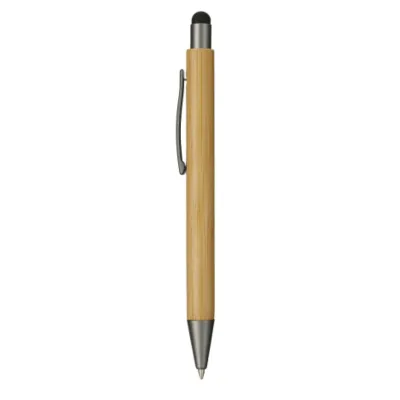Meaning of Colors in Flag Of India
Meaning of Colors in Flag Of India

India, a land of diversity, cultural richness, and historical significance, is often symbolized by its national flag – a tricolor that embodies the spirit of the nation. Behind the bold saffron, pristine white, and deep green hues lies a story of struggle, unity, and resilience. Let's embark on a symbolic journey to unravel the vibrant tale behind the colors of the Indian flag.
Saffron: The Color of Courage and Sacrifice
Saffron, a hue that resonates with warmth and vitality, occupies the top band of the Indian flag. It represents courage, sacrifice, and the spirit of renunciation. This vibrant shade embodies the valor and resilience of India's freedom fighters who fearlessly stood against colonial oppression.
Throughout history, saffron has been associated with asceticism and sacrifice in Indian culture. It symbolizes the spirit of selflessness and dedication to a greater cause. The inclusion of saffron in the flag serves as a reminder of the sacrifices made by countless individuals in the struggle for independence.
White: The Color of Truth and Peace
The middle band of the Indian flag is adorned with pristine white, a color that signifies truth, purity, and peace. White represents the quest for truth and justice, essential values upheld by the Indian society.
White also embodies the principle of non-violence, famously advocated by Mahatma Gandhi, the father of the Indian nation. Gandhi's philosophy of Ahimsa (non-violence) played a pivotal role in India's struggle for freedom and continues to inspire movements for peace worldwide.
Green: The Color of Growth and Fertility
The bottom band of the Indian flag is adorned with a rich green hue, symbolizing growth, fertility, and auspiciousness. Green represents the fertile land of India, its lush vegetation, and agricultural prosperity.
In the context of the Indian flag, green also signifies faith and prosperity. It embodies the nation's aspirations for growth, progress, and abundance. Additionally, green serves as a tribute to the farmers and agrarian communities whose hard work sustains the nation's economy.
The Ashoka Chakra: Emblem of Unity and Progress
At the center of the Indian flag lies the Ashoka Chakra, a 24-spoke wheel that symbolizes progress, movement, and dynamism. Derived from the Ashoka Pillar, an ancient Indian emblem of unity and righteousness, the Ashoka Chakra represents the eternal cycle of life and the pursuit of Dharma (righteousness).
The Ashoka Chakra also embodies the principles of unity and diversity, reflecting India's multicultural ethos and pluralistic society. It serves as a powerful reminder of the nation's commitment to tolerance, inclusivity, and harmony.
The Historical Context: Struggle for Independence
To truly understand the significance of the Indian flag's colors, one must delve into the historical context of India's struggle for independence. The late 19th and early 20th centuries were marked by fervent movements against British colonial rule, led by iconic figures such as Mahatma Gandhi, Jawaharlal Nehru, and Subhas Chandra Bose.
Saffron, white, and green were not arbitrarily chosen; they were carefully selected to represent the aspirations and ideals of the freedom movement. Saffron, with its association with sacrifice and courage, embodied the spirit of the revolutionaries who fearlessly challenged the might of the British Empire. White symbolized the purity of purpose and the non-violent resistance advocated by leaders like Gandhi. Green, reminiscent of India's fertile lands and agrarian heritage, underscored the nation's quest for prosperity and growth.
Evolution of the Flag: From Swaraj to Independence
The evolution of the Indian flag mirrors the progression of India's struggle for self-rule. The first version of the flag was designed by freedom fighter Pingali Venkayya in 1921, featuring two horizontal bands of red and green representing Hinduism and Islam, with a spinning wheel in the center symbolizing progress and unity. It wasn't until 1931 that the current tricolor design, incorporating saffron, white, and green, was officially adopted by the Indian National Congress.
The inclusion of the Ashoka Chakra in the center of the flag in 1947 further reinforced the ideals of unity and progress. This emblem, derived from the Ashoka Pillar, served as a potent symbol of India's ancient heritage and commitment to righteousness.
Post-Independence Significance: Unity in Diversity
Beyond its role in the struggle for independence, the Indian flag continues to serve as a unifying symbol in the diverse tapestry of Indian society. India is a mosaic of languages, cultures, and religions, and the flag stands as a beacon of unity amidst this diversity.
The tricolor represents the unity of purpose that binds the nation together, transcending regional, linguistic, and religious differences. It embodies the collective aspirations of a billion people striving for progress, prosperity, and peace.
Global Significance: Inspiration and Solidarity
The colors of the Indian flag have transcended national boundaries, inspiring movements for freedom, justice, and equality around the world. The principles of non-violence and peaceful resistance championed by Gandhi have influenced leaders and activists across continents, from Martin Luther King Jr. in the United States to Nelson Mandela in South Africa.
Moreover, the Indian flag serves as a symbol of solidarity with oppressed peoples everywhere. India's own struggle for independence resonated with colonized nations across Asia, Africa, and beyond, igniting a flame of hope for liberation and self-determination.
Conclusion: A Tapestry of Unity and Resilience
In conclusion, the colors of the Indian flag – saffron, white, and green – along with the Ashoka Chakra, weave a tapestry of unity, resilience, and hope. Each color carries profound symbolism, reflecting the values, aspirations, and collective consciousness of the Indian people.
As India continues its journey towards progress and development, the national flag remains a potent symbol of identity, pride, and solidarity. It serves as a beacon of hope, inspiring future generations to uphold the ideals of freedom, truth, and peace.
In the vibrant story behind the colors of the Indian flag, we find not just a symbol, but a testament to the indomitable spirit of a nation – a spirit that continues to shine brightly, illuminating the path towards a brighter tomorrow.
Trending Categories for Promotional Products
Browse the most popular and trending products and be the part of the trendy products





















